
Bezique or Bésigue is a 19th-century French melding and trick-taking card game for two players that came to Britain and is still played today. The game is derived from Piquet, possibly via Marriage (Sixty-six) and Briscan, with additional scoring features, notably the peculiar liaison of the Q♠ and J♦ that is also a feature of Pinochle, Binokel, and similarly named games that vary by country.

Commerce is an 18th-century gambling French card game akin to Thirty-one and perhaps ancestral to Whisky Poker and Bastard Brag. It aggregates a variety of games with the same game mechanics. Trade and Barter, the English equivalent, has the same combinations, but a different way of acquiring them. Trentuno, Trent-et-Uno, applies basically to the same method of play, but also has slightly different combinations. Its rules are recorded as early as 1769.
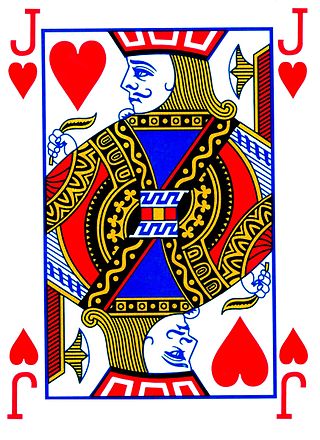
Reversis, or more rarely, Réversi, is a very old trick-taking card game of the Hearts group whose origin is supposed to be Italian, transformed into Spain and then in France. It is considered one of the two probable ancestors of Hearts, Black Lady and Black Maria, the other being Coquimbert or Coquinbert. It was very popular with the French aristocracy in the 17th and 18th centuries, and much played elsewhere, except in Britain. Initially quite simple, the game eventually developed into an elaborate affair involving vast quantities of counters and a complex system of pools and side-payments. Its name may have possibly come from the reverse order and construction of the game itself, or even from its exceptional slam which, like "shooting the moon" in Black Lady, reverses the entire aim of the game.

The following is a glossary of terms used in card games. Besides the terms listed here, there are thousands of common and uncommon slang terms. Terms in this glossary should not be game-specific, but apply to a wide range of card games. For glossaries that relate primarily to one game or family of similar games, see Game-specific glossaries.
Jeu Royal de la Guerre is a French novelty card game for two to twelve players that was described in La Maison des Jeux Academiques in 1659. It is a trick-taking game played with a dedicated war-themed 40-card pack based on the French-suited 36-card piquet pack. The suits are irrelevant for gameplay, and to a large extent the game is determined by four suitless special cards.

Dreierschnapsen, Talonschnapsen or Staperlschnapsen is a three-hand variant of the popular Austrian card game, Bauernschnapsen. The rules are very similar to those for Bauernschnapsen except that, instead of two teams of two players, one player bids to become the soloist against the other two who form a temporary alliance. Another difference is that the game makes use of a talon with which the soloist may exchange cards to improve his hand, hence its alternative name of Talonschnapsen. The game is usually played with William Tell cards.

Mouche, also known as Lanterlu, is an old, French, trick-taking card game for two to six players which has elements, such as bluffing, reminiscent of the much later game of poker. It is a member of the Rams family of games and, although it is a gambling game, often played for small stakes, it is also suitable as a party game or as a family game with children from the age of 12 upwards. It is named after the mouche, a term that variously refers to its winning hand, the basic stake and the penalty for failing to take any tricks. Although also called Bête, it should not be confused with the older game of that name from which it came and which, in turn, was a derivative of Triomphe.
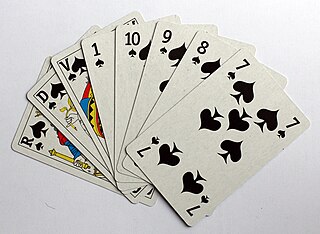
Bête, la Bête, Beste or la Beste, originally known as Homme or l'Homme, was an old, French, trick-taking card game, usually for three to five players. It was a derivative of Triomphe created by introducing the concept of bidding. Its earlier name gives away its descent from the 16th-century Spanish game of Ombre. It is the "earliest recorded multi-player version of Triomphe".

The game of Nain Jaune or Yellow Dwarf, also formerly called Lindor, is an "attractive and unique traditional French card game" using a board comprising five compartments or boxes. It is a reasoned game of chance because it combines the hazards of card distribution with the strategy of building suits. Nain Jaune, which is considered a classic French game, is named after the seven of diamonds, which is depicted as a yellow dwarf in the centre of the game board.

The jeux de hocs are a family of French card games in which the aim is to be first to shed all one's hand cards to sequences laid out in rows on the table. They all feature cards known as 'stops' or hocs: cards that end a sequence and give the one who played it the advantage of being able to start a new sequence. In some games, hocs attract bonuses.

Culbas or Cul-bas is an historical French card game of the fishing type for three to eight players that dates to at least the 17th century. It is described as being "very old" and having "a great simplicity in which chance plays the biggest role."

Gé, Point, Flux et Sequence, also called Les Quatre Jeux is an historical, French gambling, card game of the 17th and early 18th centuries.
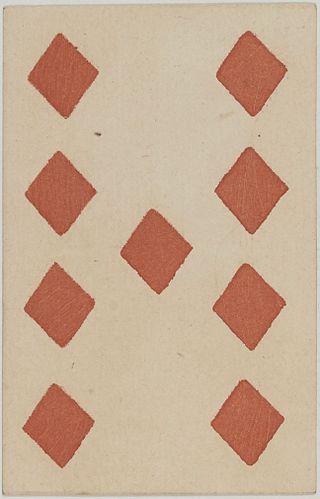
Comet is a very old, French card game of the Stops family for 2 to 5 players that is still played today. It was originally called Manille, but acquired a new name on the appearance of Halley's Comet in 1682. It is not related to the modern trick-taking game also called Manille. The American game of Commit is an evolution of Comet.

Quarante de Roi or Quarante de Rois is an historical French, point-trick, card game for four players in partnerships of two. The name comes from its highest scoring combination of four Kings which is worth 40 points.
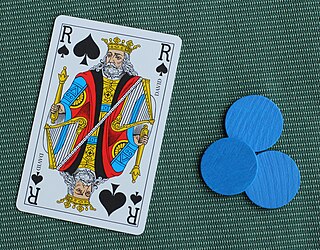
Tontine is an historical French gambling game for five to twelve players using playing cards. It is a social game of pure chance in which the chips (jetons) circulate between the players and the pool until one player wins all the chips in play.

Emprunt is an historical French card game of the Hoc family for three to six players that dates to at least the early 18th century.
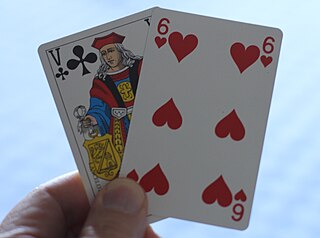
Ferme ("Farm") is an historical French gambling game of the banking type for ten to twelve players that dates to the mid-17th century. It was described then as being "fun and recreational".
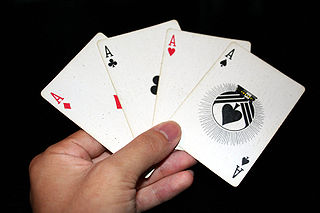
Romestecq is an historical Dutch card game for two, four or six players in two teams that dates to at least the 17th century. It was also popular in France for over a century. Despite being criticised in contemporary sources as "complicated" it continued to appear in the literature until the end of the 19th century and was sufficiently interesting for it to appear in The Penguin Book of Card Games in 2008.

Papillon is an old French card game of the fishing type for three or four players. It has been described as "perfect for children who know how to count".

Skærvindsel is a Danish card game for four players that is a member of the Schafkopf family. Today it is mostly played in Jutland and is therefore often spelled Sjervinsel, but was previously widespread throughout Denmark. It was the first Danish game where the winner of the auction, the declarer, could choose a partner by calling an Ace. This principle has since been transferred to Call-Ace Whist (Esmakkerwhist).



















